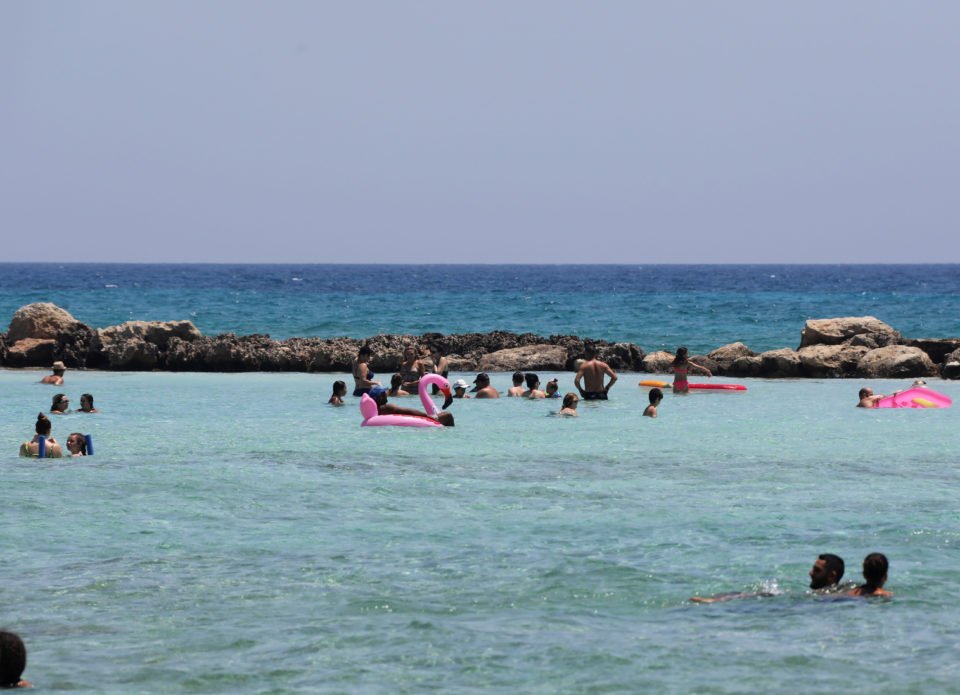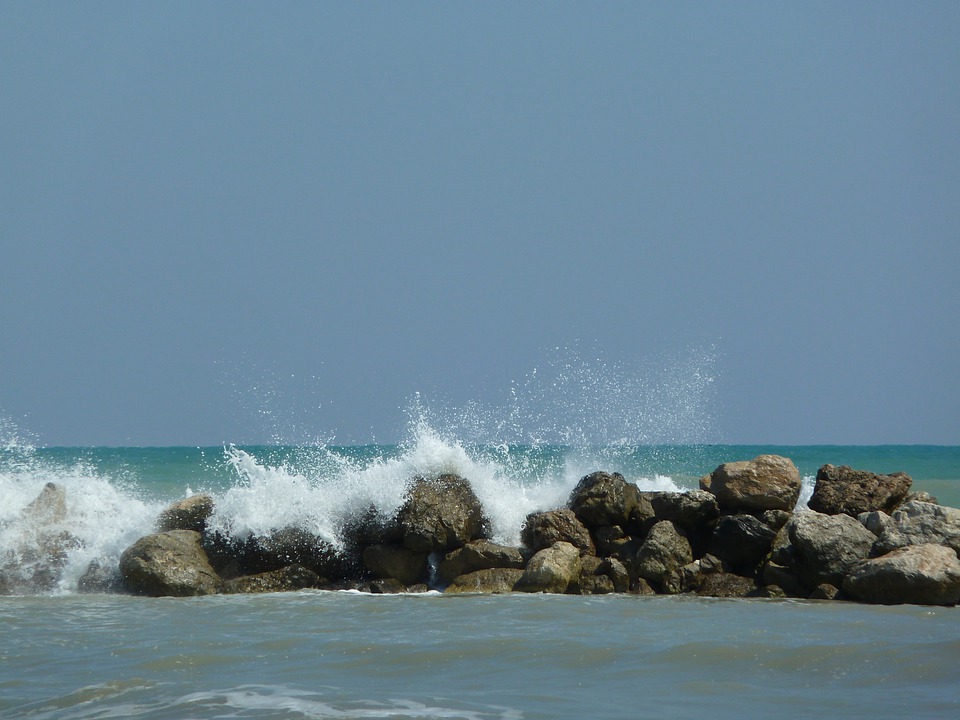As they spring up everywhere, environmentalists question the value of breakwaters as the answer to maintaining sandy beaches and preventing coastal erosion
There are five planned for Chlorakas and nine more for Pervolia. They’re found in Latsi, Polis and Oroklini, to name but some of the beaches that have become home to the growing number of breakwaters.
And the environmentalists are not happy. They argue that breakwater marine developments are being constructed in pursuit of sandy beaches for tourism at any cost, warning of harm to the environment and calling for their re-examination.
Breakwaters are erected in coastal areas to protect against tides, currents and waves and also to minimise coastal erosion.
But a recent joint statement issued by various NGOs including BirdLife Cyprus, Terra Cypria and AKTI project and research centre, points out that in most cases breakwaters do not protect the coast but on the contrary, aggravate the problem by stripping the coast of its ability to safeguard the wider coastal front.
Breakwaters, carry sand from the coast near them to the area in front of them where it is trapped, leading to the formation of a sandy beach on one hand, but on the other, lead to the erosion of nearby coastlines not protected by the structures, as the momentum of the waves are being disturbed and by extension disturbing the dynamic equilibrium of the broader coastline.
And this, say the environmentalists, is especially true when these structures are placed in a piecemeal fashion and without a holistic consideration to the broader coastline.
In such cases, the resulting knock-on effect then requires the construction of new breakwaters in addressing the problem the previous breakwaters now created.
Pervolia is an example. An initial six breakwaters at Pervolia were completed in 2018. Meanwhile a further nine are under construction, making 15 in total. The community council leader said on Friday that when these are completed “we will be able to say that the vulnerable areas have a full anti erosion armour”.
But chartered civil and marine engineer Dr Antonis Toumazis who undertakes environmental studies for such projects told the Cyprus Mail that breakwaters are not a panacea and should be employed according to the problem at hand.
“Breakwaters are an option in limiting wave energy hitting the shores. They are not a panacea, and their application should be examined up close and on a-case-by-case basis. They should also not be constructed in a piecemeal fashion and their impact on the surrounding areas should be considered,” Toumazis said.
Importantly, the NGOs’ joint statement highlights – among other points – the lack of a national strategy governing the protection of Cypriot shores, resulting in the impact assessment for a series of breakwaters taking place in isolation, thus obscuring the holistic picture across the broader Cypriot coastline.
Dr Xenia Loizidou, marine engineer and AKTI’s chair of the board of directors, in addressing the damage caused by existing breakwater developments also stressed the state’s policies in balancing environmental issues and construction development projects, alleging mismanagement.
“Our problem is not only the climate change/crisis but the mismanagement of our natural resources,” Dr Xenia Loizidou said.
“Cypriot shores are eroding not because of rising sea levels but because of human interference within coastal protected zones for years now,” she added. “We have built hotels, mined our quarries for raw materials, erected retaining walls, built coastal walkways, and breakwaters. All these activities have exacerbated the erosion of our coastlines.”
Irene Constantinou from the agriculture ministry’s environment department, the authority regulating the environmental dimension of construction development projects, said that “these are references to past sins” that took place at a time when the current regulatory framework was not in place.
“Much of the erosion experienced today is the result of past development projects, more specifically the building of dams across the island,” she said. “Dams intercept sediments in reservoirs leading to reduced sediment discharge into the sea thus accelerating coastal erosion.”
She referred to the present environmental licensing process governed by EU Directive 2014/51, which necessitates the production of an environmental study with its assorted specifications, including an assessment of the existing situation on the ground.
“An assessment also takes place upon the construction and operation of a given project. As far as our department is concerned, we seek to ensure that a study’s specifications are aligned with the EU directive,” she said.
Following that, the project’s owner is then obliged to hold a public consultation and present it to stakeholders and interested parties.
“Subsequently, the project is submitted for approval to our department, brought forward for assessment by a committee made up of members from various governmental departments and from members of non-governmental entities such as the scientific and technical chamber (Erek) and the federation of environmental and ecological organisations,” she said.
“The final decision rests with our department.”
Toumazis, referring to the state’s process governing the development of such projects pointed out that the state’s approach has been put on a much more rational basis for some time now.
“An environmental opinion is necessitated in materialising these kinds of projects and to attain that, an environmental study must be drawn up, presented in public and published online, be assessed, discussed by the stakeholders and then have the environmental licence issued, given that it meets certain specifications,” he said.
All well and good, but in Loizidou’s opinion, the significance of the regulatory framework is mostly irrelevant given the current state of affairs in Cyprus.
“The problem in Cyprus is not the lack of good legislation, but rather, the political will in monitoring their implementation and administering accountability,” she said
“Did anyone ever hold accountable consultants who drew up studies whose impact findings were out of line with the actual impact after the project’s completion? Do those who lie in their studies ever get punished?” she added, also stressing the incomplete nature of the studies often submitted to the environment department.
“This part of the equation has been salami sliced. The environmental studies are piecemeal and incomplete as they fail to take into account the impact of the sourcing of raw materials and also disregard matters pertaining to bathers’ safety,” Loizidou said.
“One example where bathers’ safety is in question is in Kissonerga, where the phenomenon of reverse bottom currents was exacerbated after the placement of the breakwaters,” she added.
Another similar example where bather’s safety may be in question is at the ongoing development in Chlorakas where a €4.1 million project includes five parallel breakwaters being constructed.
Loizidou says that the sea area there has a relief that in combination with the intense wave action creates reverse bottom currents.
“Together with the breakwaters this is a deadly mixture that can cause drowning,” Loizidou added.
The environment department denied they put up with piecemeal studies.
“The environmental studies are not piecemeal and are always accompanied by a coastal engineering study. If a study submitted is indeed piecemeal, then we send it back requiring expansion of its scope,” counters Constantinou. “We have had many piecemeal studies submitted and we always send them back. Our tendency is to look at an area holistically and assess impact for the whole area.”
But Loizidou said that if the department considers studies submitted as incomplete then they should be rendering them void.
“Every action is judged by its results. If we conclude that the environmental licences handed out are in line with EU laws and regulations, then I rest my case,” Loizidou said. “And If we think it’s right to live on an island surrounded by breakwaters then I also rest my case.”
Community leader welcomes extensive anti-erosion works on Pervolia coast
Emergency anti-erosion development along the Pervolia coast is to be completed within twelve months, according to Pervolia community council secretary Christophoros Panteli.
“The work for the emergency anti-erosion development begun a few days ago at a small part of the Pervolia beach next to Pharos. It will be developed in tandem with the nine breakwaters currently under construction in the same area with the aim of halting the extended erosion observed along the coast,” Panteli told the Cyprus News Agency.
“At that specific spot, dirt and large volumes of soil are being dragged, and the sea is becoming red from the mud and that does not create the best image for a tourist area,” he added.
The development includes the placement of natural boulders along the coast and will be completed within twelve months as from April 2022, when the contract was signed between the public works department and C Kasions & Son Ltd. The development is reckoned to cost approximately €457,000 including VAT.
The development occupies a total length of 435 metres of the beach front in the area of Pharos at Pervolia, and includes a fortification made up of natural boulders with a total length of 150 metres and fourteen cantilevers, Panteli said.
The existing culvert is also being restored and will be expanded to approximately 10 metres, Panteli added.
Referring to the ongoing development of the nine breakwaters in the same area Panteli said that “with the development of the breakwaters at Pervolia and Oroklini we will be able to say that the vulnerable areas of Larnaca district have a full anti erosion armour,” Panteli said.
“The contract provides for their completion within 30 months at a cost of €6,247,500 and it’s reckoned that they will be delivered complete in mid-2024,” he added.
According to the community council’s secretary, the initial six breakwaters at Pervolia were completed in 2018. With the new nine, a total of 15 breakers will be in place as per Metsovio University’s study proposal prepared in 2003. The implementation of the study’s proposals only begun 18 years after, and within this significant span of time the shore’s erosion had exacerbated considerably.








Click here to change your cookie preferences